Which macro photography flash setup will meet your requirements for super-clear close-ups?
If you love macro pictures and want to improve the quality of your close-up shots, you should consider purchasing a dedicated flash that is suitable for macro photography and compatible with your lens. An all-purpose flash is a bad idea for this type of photography, as the flash will likely cast shadows at such a close shooting distance.
You can take sharper pictures with smaller apertures and better framing using a flash. This device will give you better illumination, and thus motion freeze will be available. All this will provide you with super clear pictures even without setting up a tripod.
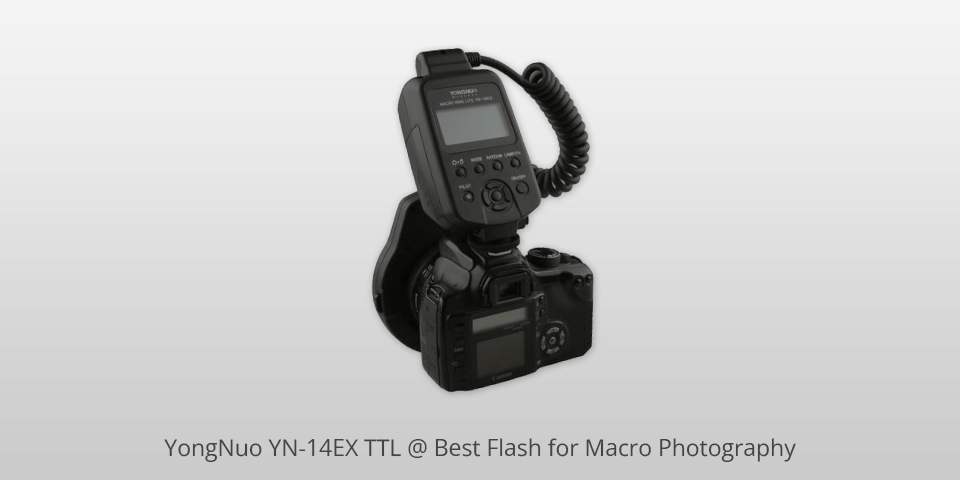
Speaking of the best camera flashes, YongNuo YN-14EX TTL is definitely one of the best ones. It combines extensive customization options, small weight, and an affordable $115 price tag. If you have a Canon, it’s even easier for you because it also provides access to the Canon camera menu.
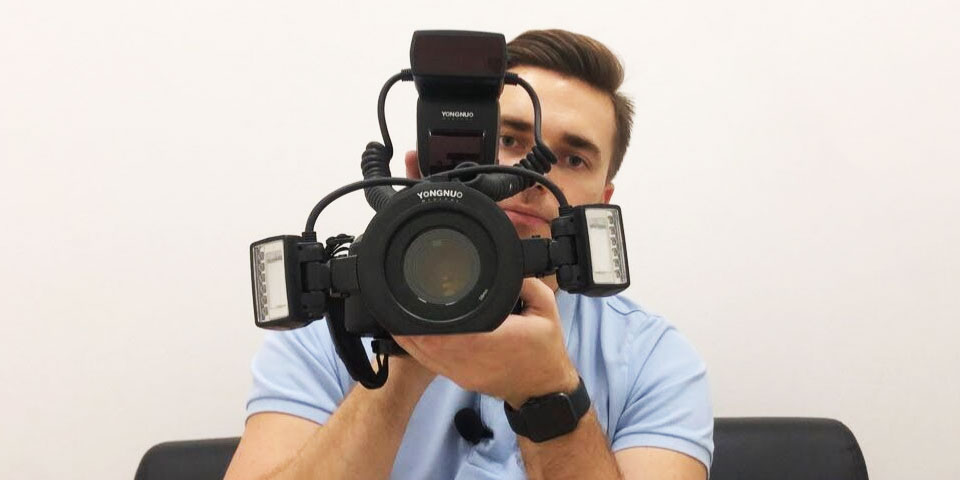
Setting the flash ratio and the simultaneous or separate use of flash tubes A and B is a breeze with this device. A nice bonus is that this macro photography flash setup supports saving your user settings so you can activate them more quickly the next time you need them. At full power, the recycling time is only 3 seconds. The developers have provided an external socket connector to improve the user experience and meet all expectations from recycling time.
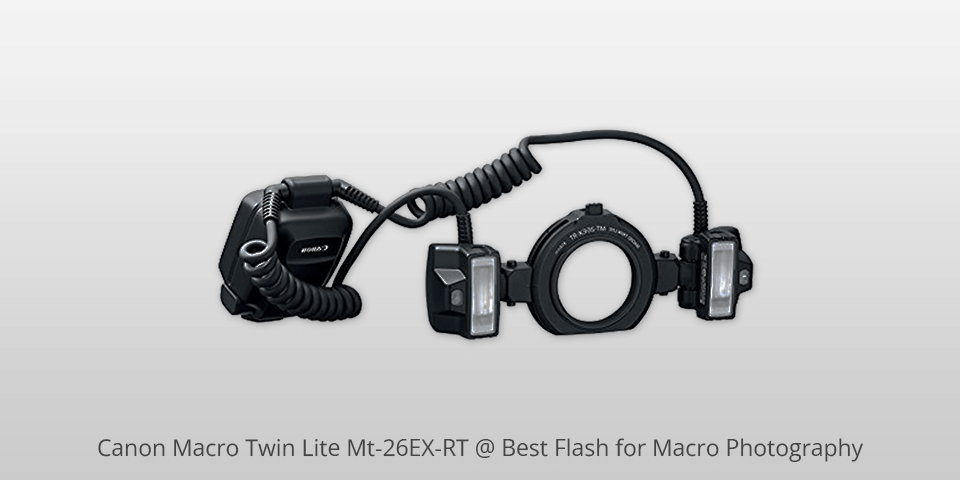
This flash diffuser for macro photography fits all EOS DSLR bodies and works great in combination with Canon’s EF and EF-S macro lenses. It consists of two rotatable dismountable heads, each of which can be adjusted separately, as well as two detachable light diffusers, with which you can achieve a 3D lighting effect. I can deservedly call it pro-grade gear, in return for which you will have to pay $989.
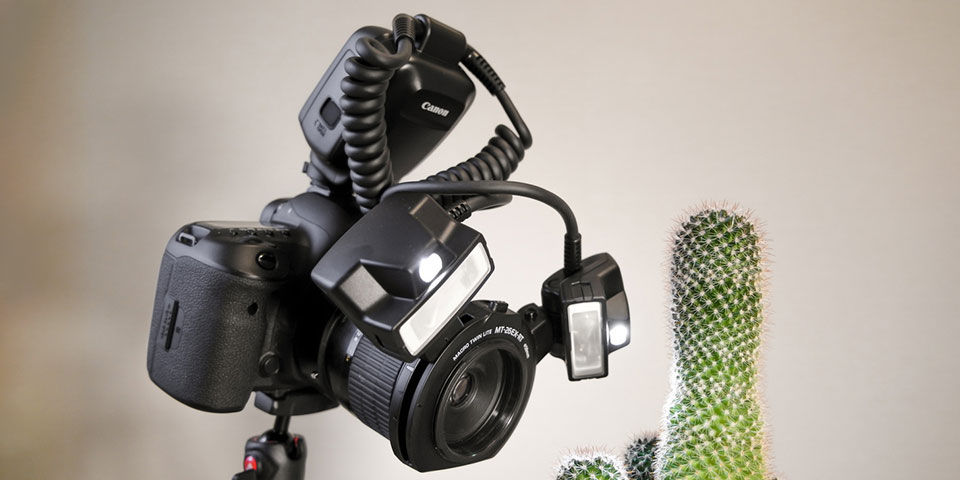
I also like that it comes with advanced manual controls available right on the LCD panel. Control of any of the heads is available in 1/3-stop increments separately from the other. You can adjust the lighting power as you need, up to a value of 1/5124, so as not to get overexposed in macro shots. If you’re shooting fast-moving subjects, the Macro Twin Lite MT-26EX-RT is your must-have to help you set the most appropriate settings for any situation.
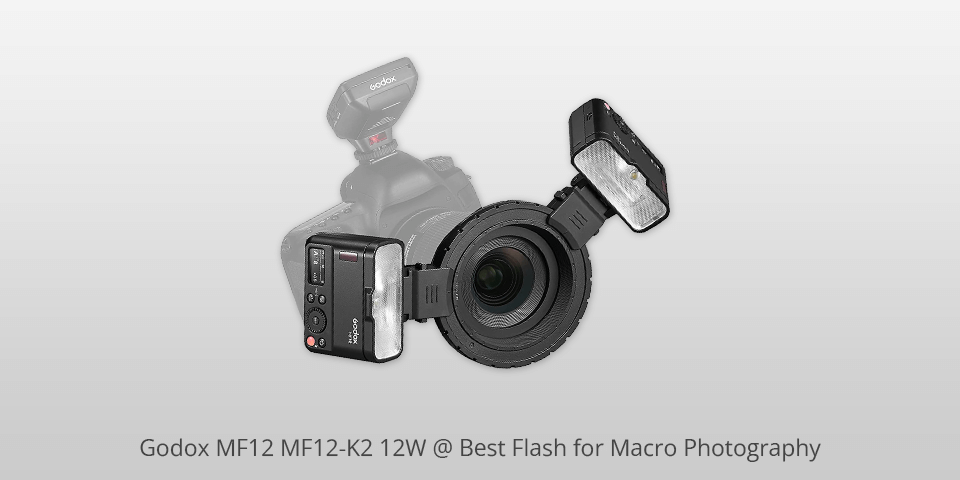
If you use multiple cameras from different brands and need a versatile macro flash, the Godox MF12 MF12-K2 12W is perfect and costs just $250. The device is compatible with various cameras including Sony, Fuji, and Panasonic cameras for macro photography to name a few.
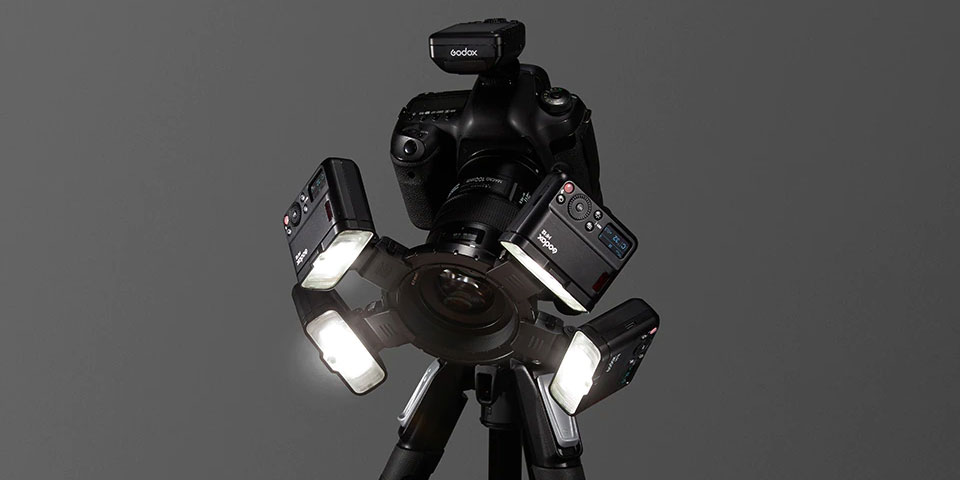
The unit comes with a tiltable adapter for extreme macro positioning to direct the light beams directly into your subject to fill even the smallest space directly in front of the camera with soft light. Without such a function, the picture may not work due to the object being too close to the camera and, as a result, the inability to focus.
You can also play around with the settings and use multiple flashes as a macro light ring and in other interesting ways. For me it is convenient that you can rotate each head and place it on the mounting ring however you want to achieve different lighting effects, rather than just lighting up the front of the object.
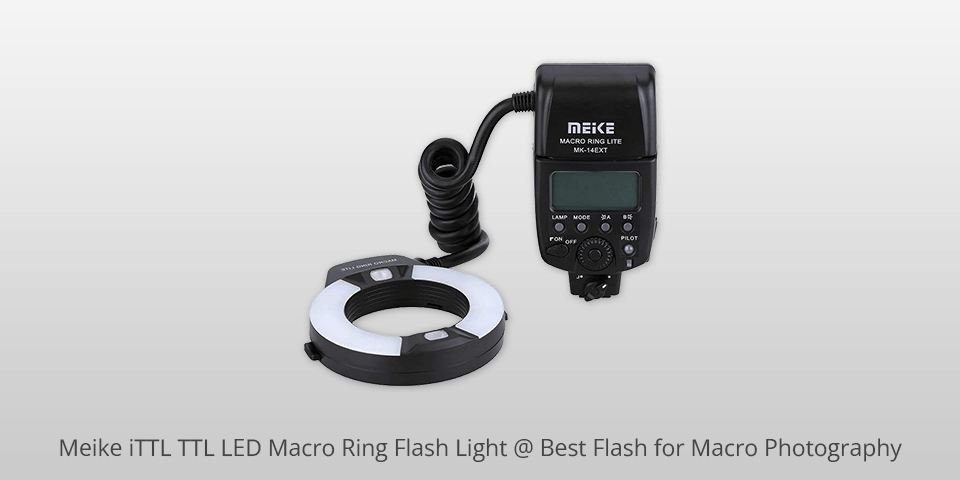
If pro flashes aren’t what you’re after for right now, I recommend to take a closer look at this flash for macro photography from the low-budget range. It costs just $89, and in return gives you a lot of cool lighting features for taking macro shots. The two heads located on the right and left can be adjusted as you need to achieve a 3D lighting effect or others.

The kit includes 7 adapter rings that fit a variety of lens sizes so you’re not locked into a specific lens. By installing an AA alkaline battery, you can expect to increase the flash time by 100 – 800 times. What’s more, recycling only takes 3 seconds and you can instantly take macro shots with this flash without the delays associated with cheap models.

This super inexpensive flash macro photography offers pretty good quality for $39. It comes with a macro ring head, an LCD for lighting power control, 8 mounting rings (49-77mm), and 4 diffusers in different colors to achieve extraordinary effects in your macro shots.

A wide range of DSLR cameras support the use of Nc 48 Macro LED Ring Light. A nice bonus is that, unlike other, even expensive analogs, it does not create a vignette effect on the photo. With this flash, you don’t have to worry about light problems as it is stable and reliable. Despite the plastic fittings, you can be sure of the reliability of fastening.
| IMAGE | NAME | FEATURES | |
|---|---|---|---|

|
YongNuo YN-14EX TTL
OUR CHOICE
|
CHECK PRICE → | |

|
Canon Macro Twin Lite Mt-26EX-RT
MANUAL
|
CHECK PRICE → | |

|
Godox MF12 MF12-K2 12W
UNIVERSAL
|
CHECK PRICE → |
The best flash for macro photography is one that is supported by your camera and your lens, and also meets all your expectations. Below you can see the parameters that you should pay attention to before buying.
Guide number. This parameter characterizes the flash intensity. Its value is the distance in meters at f/1 aperture at ISO100. You can find out the real value by dividing this value by the actual aperture. As for ring flashes, they are preferred near, and accordingly, the value is approximately 15.
TTL metering. This automatic flash metering system is supported by both SLR and mirrorless cameras that come with the pre-flash system. This helps to achieve the ideal amount and intensity of lighting.
Manual flash. With this, fixing the flash output becomes possible. Options are presented in fractions of full power, for example, 1/2, 1/8, 1/64, and so on. Everything is simple here, the more there are, the more accurately you can make a choice.
High-speed sync. If your macro photography flash setup is fast sync, then shutter speeds faster than the standard maximum possible 1/200 and 1/250 second will become available to you. This is good if you are shooting, for example, birds, or other subjects that move quickly. Blurring the background will also become easy to achieve due to the widest aperture.
Connection rings. As a rule, ring flashes come with mounting rings that help them attach to the front of the lens. Here it is important to check whether they fit each other in size. It happens that you can find them in the kit, but in most cases, photographers buy them separately, for specific lens sizes.